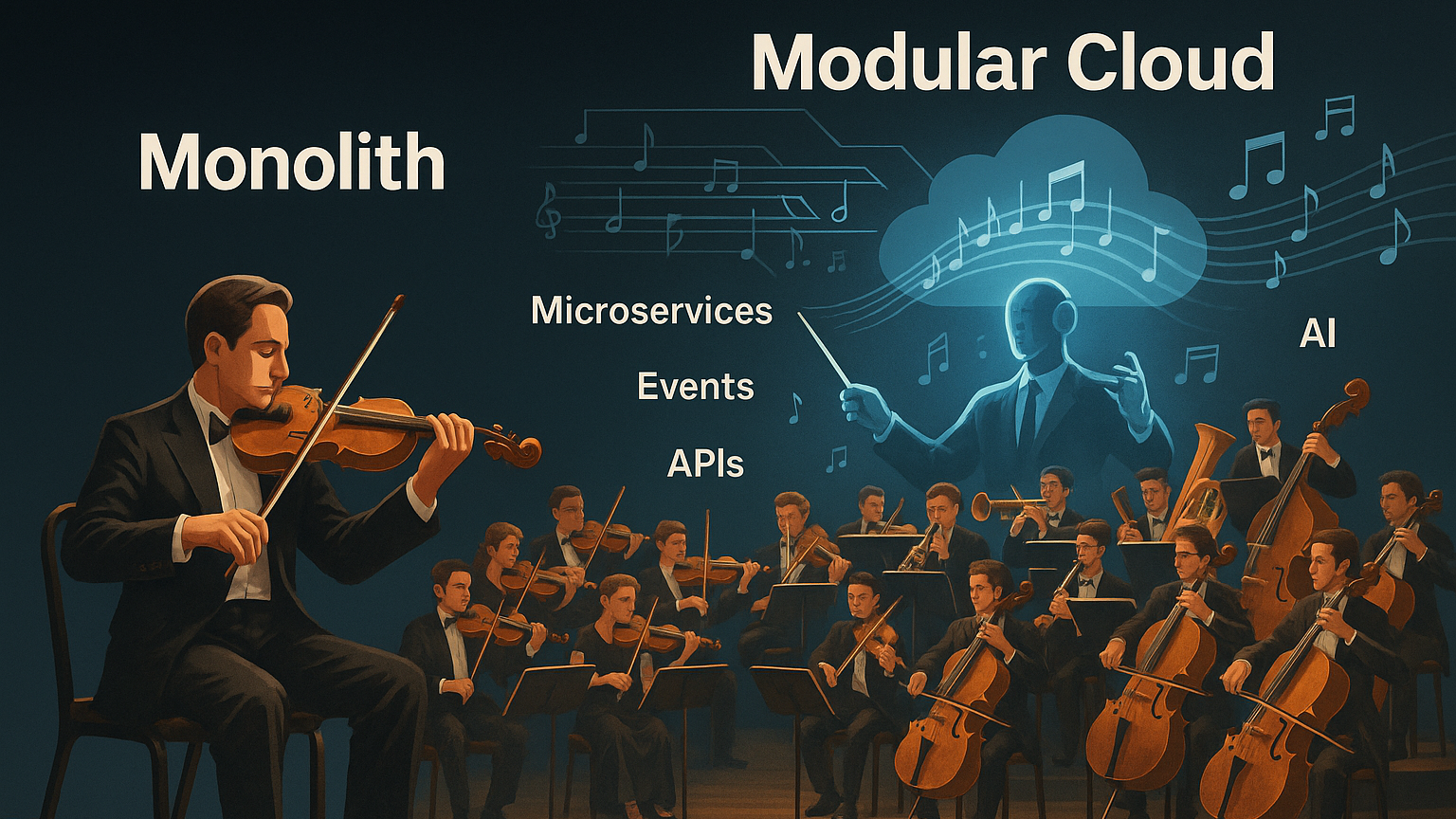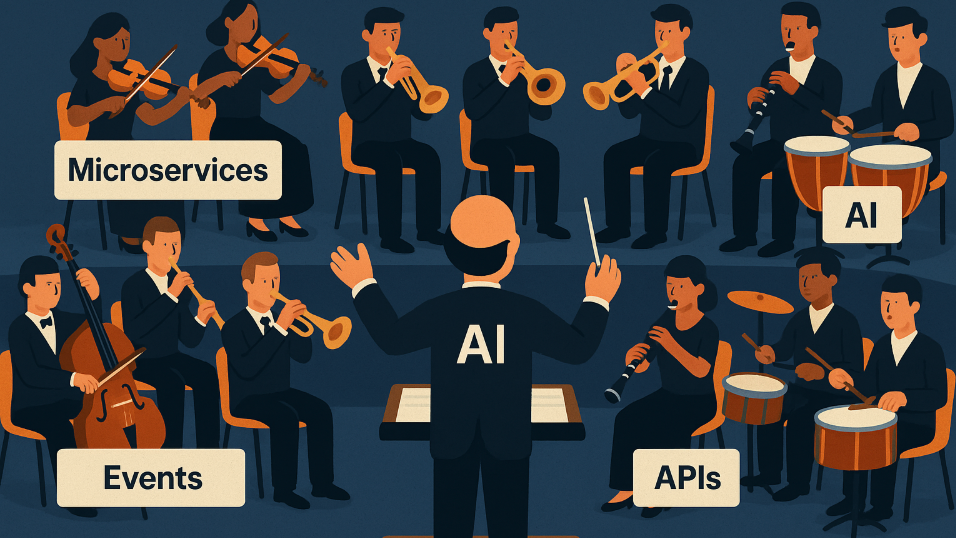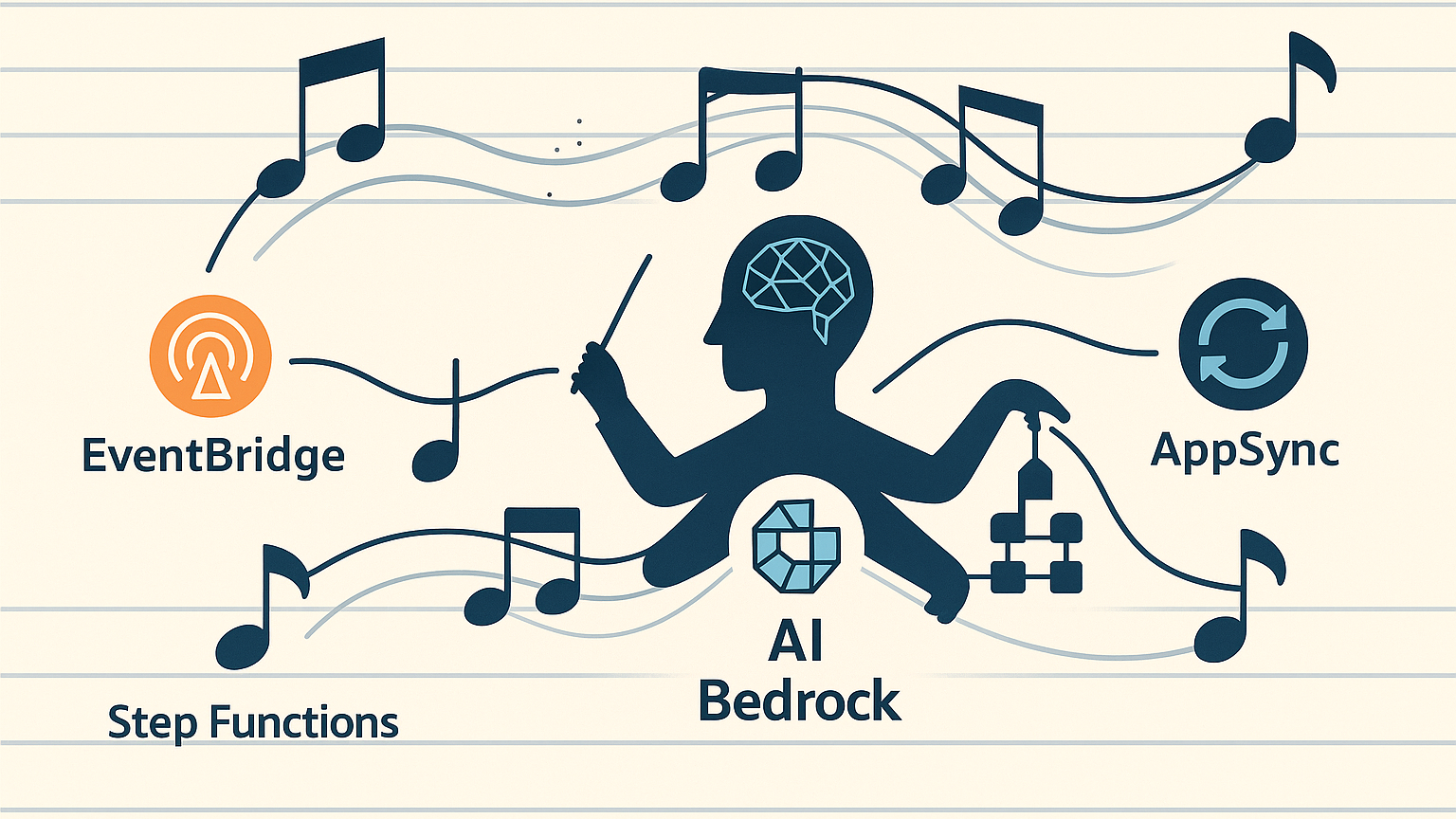Goodbye Monolith, Hello Modular Cloud


From the soloist to the intelligent orchestra
For years, software has been like a soloist — a monolith playing alone.
It was powerful, disciplined, but also rigid. And if a single note was off, the entire concert stopped.
Then came the revolution of microservices: finally, an orchestra of independent instruments, each free to play its own part.
But soon we realized that freedom without direction leads to chaos.
Too many voices, too many tempos, too many instruments that don’t listen to each other.

Today, we’ve entered a new era: the era of the Modular Cloud, where every instrument knows what to play, but AI conducts the orchestra.
Events, APIs, and intelligent models become notes on an ever-evolving score.
We’re no longer writing code — we’re composing digital music, and the cloud is the stage where it comes to life.

Microservices: instruments without a conductor
Microservices brought agility, independence, and flexibility — but like a jam session without a maestro, every instrument started playing on its own.
Complex pipelines, versions out of sync, deployments out of rhythm.
The Modular Cloud introduces a new harmony: every module is an instrument with a precise score, and the rhythm is driven by events.
In AWS, this symphony is composed with:
- EventBridge as the central metronome,
- Step Functions as the rhythmic section keeping time between services,
- AppSync blending data melodies into a single coherent flow,
- Bedrock as the conductor anticipating, adapting, and optimizing.
AI as the conductor
In an orchestra, the conductor doesn’t play — they interpret, guide, and adapt the rhythm.
In the Modular Cloud, that’s the role of AI.
It doesn’t execute code; it decides how and when the instruments should enter.
A payment module, for example, might ask Bedrock:
- “What’s the most efficient way to handle this traffic spike?”
And AI responds by adjusting resources, orchestrating Lambdas, balancing loads, and even updating flows.
AI turns the cloud from a static score into living music, where every request becomes a harmonized improvisation.

The developer as composer
In the Modular Cloud world, the developer no longer writes the entire score.
They become a composer, creating themes, defining tones, and letting the orchestra perform autonomously.
Each module (instrument) has its own rhythm and language:
- a relational database for precise notes (Aurora),
- a NoSQL database for improvised rhythms (DynamoDB),
- an AI service for the solo sections (Bedrock).
And when the music needs to change, you don’t have to rewrite everything — just change the score of a single instrument.
When the cloud becomes music
The monolith was a soloist: precise but rigid.
Microservices, a jam session: creative but chaotic.
The Modular Cloud is an intelligent orchestra, where every service plays in harmony, conducted by AI.
Every request is a note.
Every event, a beat.
Every AI decision, a gesture of the baton.
And thus, software becomes music —
No longer lines of code, but symphonies of services that adapt, improvise, and collaborate in real time.


